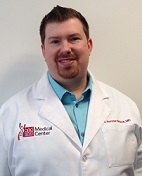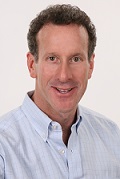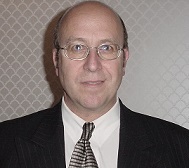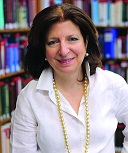Five gastroenterologists discuss the biggest challenges and opportunities in GI field expansion.
Question: What is the biggest challenge for gastroenterologists working to expand their practices or endoscopy centers this year?
 J. Royce Groce, MD, Medical Director of Endoscopy, The Ohio State University Wexner Medical Center: The biggest challenge for gastroenterologists working on expanding an endoscopy center this year is navigating the changing climate of healthcare reimbursement. As we are moving from a pay-for-service to a pay-for-performance model, there is vast uncertainty about how this will impact endoscopy practices. This will be a difficult time for hospital-based endoscopy centers, as they will have to adapt to provide the same excellent medical care at a lower cost to the healthcare system.
J. Royce Groce, MD, Medical Director of Endoscopy, The Ohio State University Wexner Medical Center: The biggest challenge for gastroenterologists working on expanding an endoscopy center this year is navigating the changing climate of healthcare reimbursement. As we are moving from a pay-for-service to a pay-for-performance model, there is vast uncertainty about how this will impact endoscopy practices. This will be a difficult time for hospital-based endoscopy centers, as they will have to adapt to provide the same excellent medical care at a lower cost to the healthcare system.
Edwin Levine, MD, GI Health Specialists/PriMed Physicians, Trumball, Conn.: As always reimbursement cuts from Medicare and commercial insurers will remain big challenges. Both are expecting and demanding improvement in efficiencies and endoscopy centers need to prepare for this. In addition, regulations continue to increase. Benchmarks and quality measures are becoming mandatory. Finally, with the implementation of the Affordable Care Act comes a lot of unknowns including unknown reimbursement rates and unknown effects on volume.
Mark Noar, MD, Director of The Endoscopy Center, Towson, Md.: I think the answer to that is reimbursement. Gastroenterology is one of the few specialties that has recently been listed as having increasing income. This is a red flag for a government looking to save money. It is clear that cuts are taking place. Rather than external expansion, gastroenterologists should look internally for ways to better use overhead time we are already paying for.
Ellen Scherl, MD, Director of The Roberts Center for Inflammatory Bowel Disease, Weill Cornell Medical College, New York: The biggest challenge is reimbursement and adequate space.
Q: What are a few of the biggest opportunities for GI practice and endoscopy center expansion?
JG: Because ambulatory endoscopy centers can generally run more efficiently and at a lower cost, there will be a push to perform most of the routine screening endoscopies in this setting. In addition, the fact that reimbursement will be contingent on the quality of the service that is performed should allow for greater oversight and improvement of endoscopy quality.
 EL: Just as the Affordable Care Act presents challenges, it also creates opportunities. The exchanges are going to be looking for centers that provide cost effective, efficient care with excellent outcomes. Centers that not only provide this type of care, but just as importantly, those that have the data to prove it, will be the ones with potential to benefit from the likely big numbers of new patients with insurance for the first time who need medical care.
EL: Just as the Affordable Care Act presents challenges, it also creates opportunities. The exchanges are going to be looking for centers that provide cost effective, efficient care with excellent outcomes. Centers that not only provide this type of care, but just as importantly, those that have the data to prove it, will be the ones with potential to benefit from the likely big numbers of new patients with insurance for the first time who need medical care.
MN: I think we have to begin by looking at that missed opportunities. Everyone has been very busy with colorectal cancer screening; there is no dearth of colonoscopy patients. But this isn't everything that can be offered.
Internal marketing is an important tool for boosting volume without bringing in more physicians. Internal marketing has become a kind of mantra. Many physicians don't listen, but it is a key to success. You don't need to bring in new resources to maintain this strategy. We empower our staff and teach them about the signs of other diseases. If a patient comes in for a colonoscopy screening, but mentions offhand reflux symptoms our staff can recognize this and bring it up with a physician. Frankly, this is just good patient care. If a patient comes in and mentions a family member has a problem, pay attention. Opportunities for further evaluation can be missed if you don't.
Q: What are a few of the best value-added services for gastroenterologists to consider?
 Vera Denmark, MD, Medical Director of Inflammatory Bowel Disease Research, Newton (Mass.) Wellesley Hospital: A lot of patients are looking for complementary and team approaches to care, such as care provided by case navigators, nutritionists or psychiatrists. We are starting to work closely with these providers. We have created a virtual center and regularly refer patients to nutritionists and psychiatrists. We regularly communicate with these providers and discuss common patient goals. But, it would be great to bring all of these providers under one roof.
Vera Denmark, MD, Medical Director of Inflammatory Bowel Disease Research, Newton (Mass.) Wellesley Hospital: A lot of patients are looking for complementary and team approaches to care, such as care provided by case navigators, nutritionists or psychiatrists. We are starting to work closely with these providers. We have created a virtual center and regularly refer patients to nutritionists and psychiatrists. We regularly communicate with these providers and discuss common patient goals. But, it would be great to bring all of these providers under one roof.
JG: The main thing that endoscopy centers can provide is adequate access for patients who require endoscopy services. This should be available in a timely fashion and at the lowest possible cost to the patient and the healthcare system.
EL: Pathology and anesthesiology services are still the best value added services for endoscopy centers. There are many potential arrangements that are seen including direct employment of these physicians by the center and contracts with larger companies that supply these services.
The endoscopy equipment suppliers are often offering deep discounts in all kinds of ancillary equipment from cleaning machines to polyp snares when new contracts come due with the centers. These discounts can have a big impact on the bottom line.
 MN: There are a number of areas that you can look to for adding ancillary income. Ancillary procedures also have the benefit of providing more comprehensive patient care. For example, hemorrhoidal banding is very inexpensive and effective. This procedure can be brought to ASCs and practices.
MN: There are a number of areas that you can look to for adding ancillary income. Ancillary procedures also have the benefit of providing more comprehensive patient care. For example, hemorrhoidal banding is very inexpensive and effective. This procedure can be brought to ASCs and practices.
Reflux is another important area. There is an excess of 50 million people in the U.S. that have GERD. This is a huge patient base. There are many tests that a practice or endoscopy center can add for the diagnosis of reflux. For example, there is esophageal manometry, pH testing and Restech. These tests are reimbursed well and you do not need to fight for reimbursement. These tests allow physicians to recommend a surgical procedure, such as Stretta, medication, LINX or a number of other treatments for GERD.
Irritable bowel syndrome and inflammatory bowel disease offer practices and endoscopy centers the opportunity to add a number of simple and valuable services. Hydrogen breath testing is a simple way to diagnosis a number of GI issues, such as bacterial overgrowth or inability to digest fructose. Physicians do not even need to perform this procedure. Physician assistants and nurses can perform this ancillary testing, decreasing the cost.
ES: High quality endoscopy in an ambulatory care setting provides for safe, effective and efficient procedures with in a comfortable/friendly environment. Personable and highly skilled staff will improve practice and patient outcomes. This will establish quality improvement initiatives such as the American College of Gastroenterology's GIQuIC (Gastrointestinal Quality Improvement Consortium).
practice and patient outcomes. This will establish quality improvement initiatives such as the American College of Gastroenterology's GIQuIC (Gastrointestinal Quality Improvement Consortium).
Q: How can endoscopy centers maximize time and resources to boost revenue?
MN: We consign hours, generally a three-hour period when no endoscopies are being performed, in the afternoon for infusion work. Payers are trying to drive this kind of procedure out of the hospital so often patients have difficulty finding an infusion center.
An ASC already has the beds and IV pumps needed for infusions, such as Remicade or infusions for multiple sclerosis patients. If your endoscopy center becomes an infusion center, the companies making the medication will place you on a list of centers posted on their websites. The center doesn't even need to spend time marketing directly.
Q: How can endoscopy centers attract new physicians to boost case volume?
JG: The best way to attract new physicians is for endoscopy center to function in an operationally efficient manner. This allows the physicians to work at their optimum capacity, increases physician and patient satisfaction and allows for improved case volumes.
EL: Clearly the best way for an endoscopy center to attract new physicians is, if possible, to offer them equity in the center. Nothing incentivizes physicians to draw volume to a center like financial ones.
Outside of financial incentives, endoscopy centers should stress the increased efficiency that they offer. Most physicians not using endoscopy centers are doing their procedures in hospitals which are much less efficient in general. The number of cases which can be done in a given amount of time is far greater in an endoscopy center than in a hospital. In our current fee for service system where time is money, this is a huge incentive.
MN: Look at allied and compatible specialties. Pulmonologists and ENT physicians are often treating symptoms of GERD, such as chronic cough and sinusitis. Many of these physicians do not have centers outside of a hospital. When putting together a coordinated approach to the diagnosis and treatment of reflux, it can be quite successful to partner with these physicians. They can perform procedures at the endoscopy center that will boost volume and revenue. For example, an ENT physician could perform transnasal endoscopy, which generally takes five to 10 minutes to complete and does not require sedation.
ES: High quality and efficient healthcare services, patient care, and operations, including databases, will attract physicians.
Q: What are a few ways endoscopy center physicians boost case volume without concentrating on physician recruitment?
JG: Some novel approaches that we are doing here at The Ohio State University Wexner Medical Center to boost physician case volume include; utilization of additional "swing rooms," having a cue of standby patients to back fill no-shows and cancellations, creative nurse work-flow schemes to reduce room turnover time and Saturday endoscopy blocks for screening colonoscopies.
EL: Obviously the work generated at endoscopy centers comes from patient office visits. Any single physician can generate only so much volume. Physician extenders, both nurse practitioners and physician assistants, can really boost case volume. By seeing patients in the office, they directly generate cases for the supervising physician as well as free up office time for him/her allowing more time in the endoscopy center.
Many centers are now opening earlier, closing later and working some weekends. Patients are demanding these changes to better fit their busy schedules. In our evolving new world of efficiency, these are the type of patient friendly changes that payers are going to want to see.
More Articles on Gastroenterology:
5 Recent GI-Driven Facility Openings & Expansions
Adenoma Detection Rate, Withdrawal Time: Examining Variation in Colonoscopy Quality Over Time
ACG Partners With National Colorectal Cancer Roundtable to Work Towards '80 by 2018' Goal
Question: What is the biggest challenge for gastroenterologists working to expand their practices or endoscopy centers this year?
 J. Royce Groce, MD, Medical Director of Endoscopy, The Ohio State University Wexner Medical Center: The biggest challenge for gastroenterologists working on expanding an endoscopy center this year is navigating the changing climate of healthcare reimbursement. As we are moving from a pay-for-service to a pay-for-performance model, there is vast uncertainty about how this will impact endoscopy practices. This will be a difficult time for hospital-based endoscopy centers, as they will have to adapt to provide the same excellent medical care at a lower cost to the healthcare system.
J. Royce Groce, MD, Medical Director of Endoscopy, The Ohio State University Wexner Medical Center: The biggest challenge for gastroenterologists working on expanding an endoscopy center this year is navigating the changing climate of healthcare reimbursement. As we are moving from a pay-for-service to a pay-for-performance model, there is vast uncertainty about how this will impact endoscopy practices. This will be a difficult time for hospital-based endoscopy centers, as they will have to adapt to provide the same excellent medical care at a lower cost to the healthcare system. Edwin Levine, MD, GI Health Specialists/PriMed Physicians, Trumball, Conn.: As always reimbursement cuts from Medicare and commercial insurers will remain big challenges. Both are expecting and demanding improvement in efficiencies and endoscopy centers need to prepare for this. In addition, regulations continue to increase. Benchmarks and quality measures are becoming mandatory. Finally, with the implementation of the Affordable Care Act comes a lot of unknowns including unknown reimbursement rates and unknown effects on volume.
Mark Noar, MD, Director of The Endoscopy Center, Towson, Md.: I think the answer to that is reimbursement. Gastroenterology is one of the few specialties that has recently been listed as having increasing income. This is a red flag for a government looking to save money. It is clear that cuts are taking place. Rather than external expansion, gastroenterologists should look internally for ways to better use overhead time we are already paying for.
Ellen Scherl, MD, Director of The Roberts Center for Inflammatory Bowel Disease, Weill Cornell Medical College, New York: The biggest challenge is reimbursement and adequate space.
Q: What are a few of the biggest opportunities for GI practice and endoscopy center expansion?
JG: Because ambulatory endoscopy centers can generally run more efficiently and at a lower cost, there will be a push to perform most of the routine screening endoscopies in this setting. In addition, the fact that reimbursement will be contingent on the quality of the service that is performed should allow for greater oversight and improvement of endoscopy quality.
 EL: Just as the Affordable Care Act presents challenges, it also creates opportunities. The exchanges are going to be looking for centers that provide cost effective, efficient care with excellent outcomes. Centers that not only provide this type of care, but just as importantly, those that have the data to prove it, will be the ones with potential to benefit from the likely big numbers of new patients with insurance for the first time who need medical care.
EL: Just as the Affordable Care Act presents challenges, it also creates opportunities. The exchanges are going to be looking for centers that provide cost effective, efficient care with excellent outcomes. Centers that not only provide this type of care, but just as importantly, those that have the data to prove it, will be the ones with potential to benefit from the likely big numbers of new patients with insurance for the first time who need medical care.MN: I think we have to begin by looking at that missed opportunities. Everyone has been very busy with colorectal cancer screening; there is no dearth of colonoscopy patients. But this isn't everything that can be offered.
Internal marketing is an important tool for boosting volume without bringing in more physicians. Internal marketing has become a kind of mantra. Many physicians don't listen, but it is a key to success. You don't need to bring in new resources to maintain this strategy. We empower our staff and teach them about the signs of other diseases. If a patient comes in for a colonoscopy screening, but mentions offhand reflux symptoms our staff can recognize this and bring it up with a physician. Frankly, this is just good patient care. If a patient comes in and mentions a family member has a problem, pay attention. Opportunities for further evaluation can be missed if you don't.
Q: What are a few of the best value-added services for gastroenterologists to consider?
 Vera Denmark, MD, Medical Director of Inflammatory Bowel Disease Research, Newton (Mass.) Wellesley Hospital: A lot of patients are looking for complementary and team approaches to care, such as care provided by case navigators, nutritionists or psychiatrists. We are starting to work closely with these providers. We have created a virtual center and regularly refer patients to nutritionists and psychiatrists. We regularly communicate with these providers and discuss common patient goals. But, it would be great to bring all of these providers under one roof.
Vera Denmark, MD, Medical Director of Inflammatory Bowel Disease Research, Newton (Mass.) Wellesley Hospital: A lot of patients are looking for complementary and team approaches to care, such as care provided by case navigators, nutritionists or psychiatrists. We are starting to work closely with these providers. We have created a virtual center and regularly refer patients to nutritionists and psychiatrists. We regularly communicate with these providers and discuss common patient goals. But, it would be great to bring all of these providers under one roof. JG: The main thing that endoscopy centers can provide is adequate access for patients who require endoscopy services. This should be available in a timely fashion and at the lowest possible cost to the patient and the healthcare system.
EL: Pathology and anesthesiology services are still the best value added services for endoscopy centers. There are many potential arrangements that are seen including direct employment of these physicians by the center and contracts with larger companies that supply these services.
The endoscopy equipment suppliers are often offering deep discounts in all kinds of ancillary equipment from cleaning machines to polyp snares when new contracts come due with the centers. These discounts can have a big impact on the bottom line.
 MN: There are a number of areas that you can look to for adding ancillary income. Ancillary procedures also have the benefit of providing more comprehensive patient care. For example, hemorrhoidal banding is very inexpensive and effective. This procedure can be brought to ASCs and practices.
MN: There are a number of areas that you can look to for adding ancillary income. Ancillary procedures also have the benefit of providing more comprehensive patient care. For example, hemorrhoidal banding is very inexpensive and effective. This procedure can be brought to ASCs and practices. Reflux is another important area. There is an excess of 50 million people in the U.S. that have GERD. This is a huge patient base. There are many tests that a practice or endoscopy center can add for the diagnosis of reflux. For example, there is esophageal manometry, pH testing and Restech. These tests are reimbursed well and you do not need to fight for reimbursement. These tests allow physicians to recommend a surgical procedure, such as Stretta, medication, LINX or a number of other treatments for GERD.
Irritable bowel syndrome and inflammatory bowel disease offer practices and endoscopy centers the opportunity to add a number of simple and valuable services. Hydrogen breath testing is a simple way to diagnosis a number of GI issues, such as bacterial overgrowth or inability to digest fructose. Physicians do not even need to perform this procedure. Physician assistants and nurses can perform this ancillary testing, decreasing the cost.
ES: High quality endoscopy in an ambulatory care setting provides for safe, effective and efficient procedures with in a comfortable/friendly environment. Personable and highly skilled staff will improve
 practice and patient outcomes. This will establish quality improvement initiatives such as the American College of Gastroenterology's GIQuIC (Gastrointestinal Quality Improvement Consortium).
practice and patient outcomes. This will establish quality improvement initiatives such as the American College of Gastroenterology's GIQuIC (Gastrointestinal Quality Improvement Consortium).Q: How can endoscopy centers maximize time and resources to boost revenue?
MN: We consign hours, generally a three-hour period when no endoscopies are being performed, in the afternoon for infusion work. Payers are trying to drive this kind of procedure out of the hospital so often patients have difficulty finding an infusion center.
An ASC already has the beds and IV pumps needed for infusions, such as Remicade or infusions for multiple sclerosis patients. If your endoscopy center becomes an infusion center, the companies making the medication will place you on a list of centers posted on their websites. The center doesn't even need to spend time marketing directly.
Q: How can endoscopy centers attract new physicians to boost case volume?
JG: The best way to attract new physicians is for endoscopy center to function in an operationally efficient manner. This allows the physicians to work at their optimum capacity, increases physician and patient satisfaction and allows for improved case volumes.
EL: Clearly the best way for an endoscopy center to attract new physicians is, if possible, to offer them equity in the center. Nothing incentivizes physicians to draw volume to a center like financial ones.
Outside of financial incentives, endoscopy centers should stress the increased efficiency that they offer. Most physicians not using endoscopy centers are doing their procedures in hospitals which are much less efficient in general. The number of cases which can be done in a given amount of time is far greater in an endoscopy center than in a hospital. In our current fee for service system where time is money, this is a huge incentive.
MN: Look at allied and compatible specialties. Pulmonologists and ENT physicians are often treating symptoms of GERD, such as chronic cough and sinusitis. Many of these physicians do not have centers outside of a hospital. When putting together a coordinated approach to the diagnosis and treatment of reflux, it can be quite successful to partner with these physicians. They can perform procedures at the endoscopy center that will boost volume and revenue. For example, an ENT physician could perform transnasal endoscopy, which generally takes five to 10 minutes to complete and does not require sedation.
ES: High quality and efficient healthcare services, patient care, and operations, including databases, will attract physicians.
Q: What are a few ways endoscopy center physicians boost case volume without concentrating on physician recruitment?
JG: Some novel approaches that we are doing here at The Ohio State University Wexner Medical Center to boost physician case volume include; utilization of additional "swing rooms," having a cue of standby patients to back fill no-shows and cancellations, creative nurse work-flow schemes to reduce room turnover time and Saturday endoscopy blocks for screening colonoscopies.
EL: Obviously the work generated at endoscopy centers comes from patient office visits. Any single physician can generate only so much volume. Physician extenders, both nurse practitioners and physician assistants, can really boost case volume. By seeing patients in the office, they directly generate cases for the supervising physician as well as free up office time for him/her allowing more time in the endoscopy center.
Many centers are now opening earlier, closing later and working some weekends. Patients are demanding these changes to better fit their busy schedules. In our evolving new world of efficiency, these are the type of patient friendly changes that payers are going to want to see.
More Articles on Gastroenterology:
5 Recent GI-Driven Facility Openings & Expansions
Adenoma Detection Rate, Withdrawal Time: Examining Variation in Colonoscopy Quality Over Time
ACG Partners With National Colorectal Cancer Roundtable to Work Towards '80 by 2018' Goal


